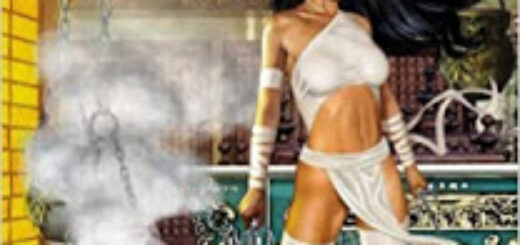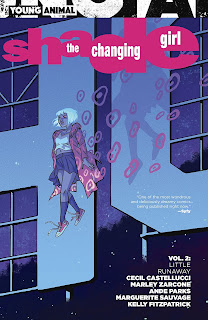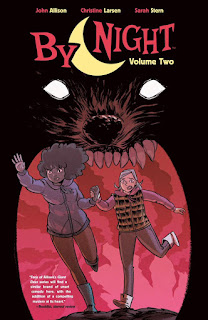Black Orchid by Neil Gaiman and Dave McKean
It’s a cliché now: the superhero story that makes a startling new origin or explanation for a character. But there was a time when it was new. There was even a time when it was reserved for minor, unimportant characters – it was too much of a risk to radically change anyone important.
We’re very far from that world now: it’s been gone for almost thirty years. Perpetual transformation of the most profitable characters is the standard. I assume the Big Two have wall-sized whiteboards to keep track of who’s currently dead, when they’re coming back, which are swapping races or genders or powers or doing heel/face turns, just so they don’t trip over themselves.
And if they don’t have whiteboards like that, they should. They need them.
But 1988 was the other side of that wave: it had just started. Alan Moore had done it with Swamp Thing, most obviously. And the glimmerings of the all-crisis-all-the-time world, of eternal reboots, was faintly visible in the passel of Secret Wars and John Byrne Superman. And the conveyor belt of all-new! all-different! minor characters was just starting.
One of them was Black Orchid , a three-issue series in the newly hot Prestige Format (forty-eight pages, perfect-bound, on fancy paper with a fancy price tag to match) by two British creators making their American debut: writer Neil Gaiman and artist Dave McKean.
Black Orchid was a definitively minor character: she didn’t even have an origin, she hadn’t had a comic named after her before. She was some kind of mob-infiltration expert, a mistress of disguise with some other powers (flight, toughness, giving and taking punches – the usual stuff). So she was perfect for the soon-to-be standard British Creator Makeover — there was very little to worry about.
So Gaiman killed Black Orchid in the opening pages. (Spoiler, I guess, for the set-up of a thirty-five year old story. Citizen Kane is about an old rich guy who owned newspapers; Star Wars is about this space farmboy named Luke; The Usual Suspects are criminals.) He connected her to a bunch of other DC characters, mostly through the Alan Moore Swamp Thing (probably because that was the current model of “treating superheroes seriously” or “making comics for adults”), giving her an origin that’s not a million miles away from Swampy himself.
Oh, the first Black Orchid was dead. And the woman she was based on was dead long before that. But you grow orchids. It’s not like there’s only one of them in the world.
There are supervillains doing supervillainy and some vague ecological stuff in the background, but this is mostly about new Black Orchid trying to figure out who the heck she is and what the heck she’s supposed to do. (In the end, it will be: fight crime in a skintight costume that shows off her tits, because DC wants to sell more comics. But that’s after this series is over.)
In some ways, Black Orchid is “The Anatomy Lesson” writ large, with the General Sunderland role broken up into several people, the “principle” one a much more important DC character. This is all origin story for a character we didn’t realize needed an origin.
It is lovely and mostly thoughtful: the adventure-story hugger-mugger sometimes tonally clashes with the “as a newborn plant-woman, who am I?” soul-searching. Gaiman admirably keeps his heroine from violence for the course of this story. (I have no idea what happened afterward: I assume she used her plant-based barely-covered tits to batter miscreants into submission like every other female superhero with strategic cutouts in her outfit.)
These days, Black Orchid is most interesting as a warm-up for The Sandman, which began soon after. It shows that Gaiman was already eager to dive into the obscure corners of DC lore, and that he wasn’t happy with the obvious story choices that universe provided. And McKean’s art is simply stunning: this was the high point of his realistic style, fully painted and drop-dead gorgeous in every panel, just as stunning as the better-known Arkham Asylum.
![]()
![]()
Reposted from The Antick Musings of G.B.H. Hornswoggler, Gent.

































































